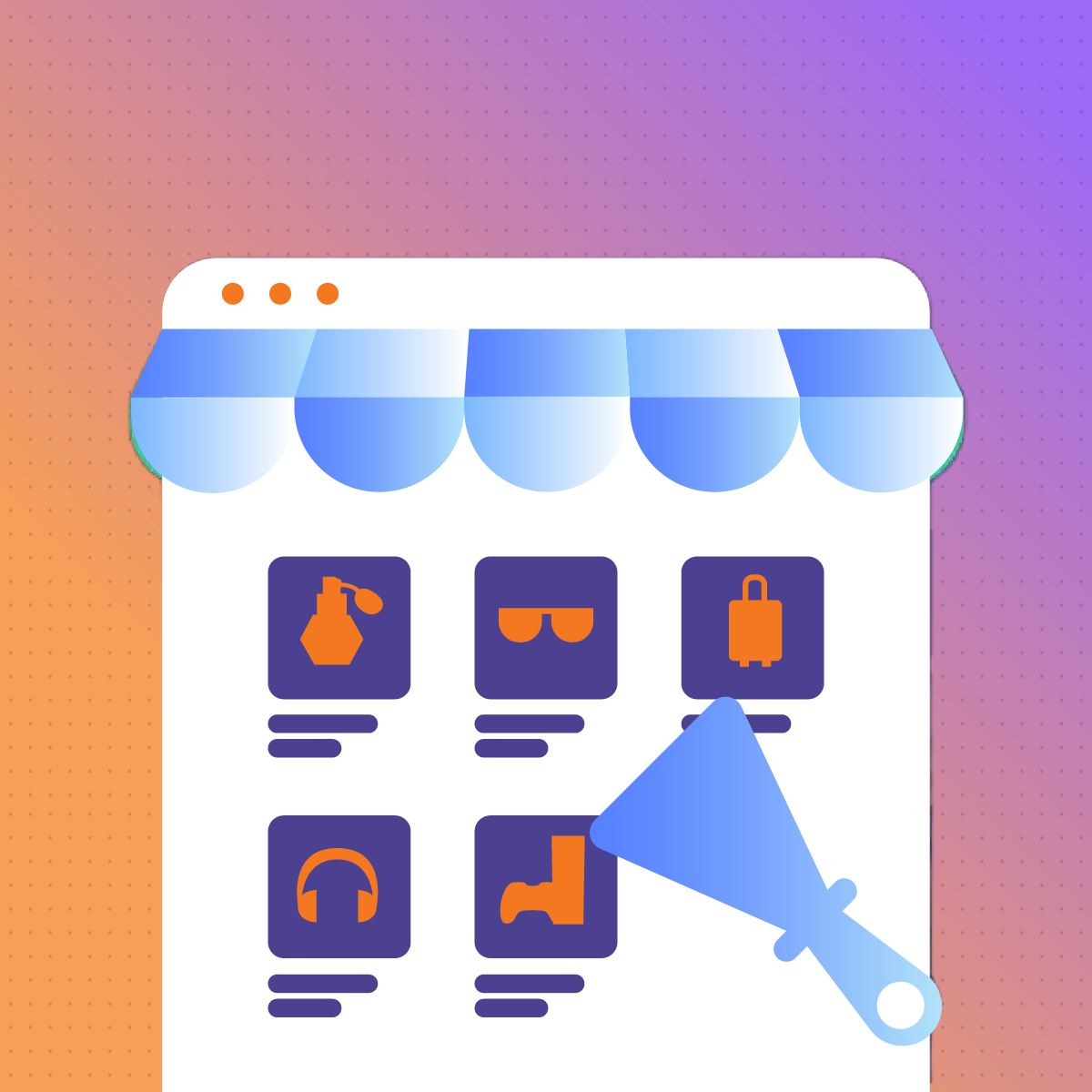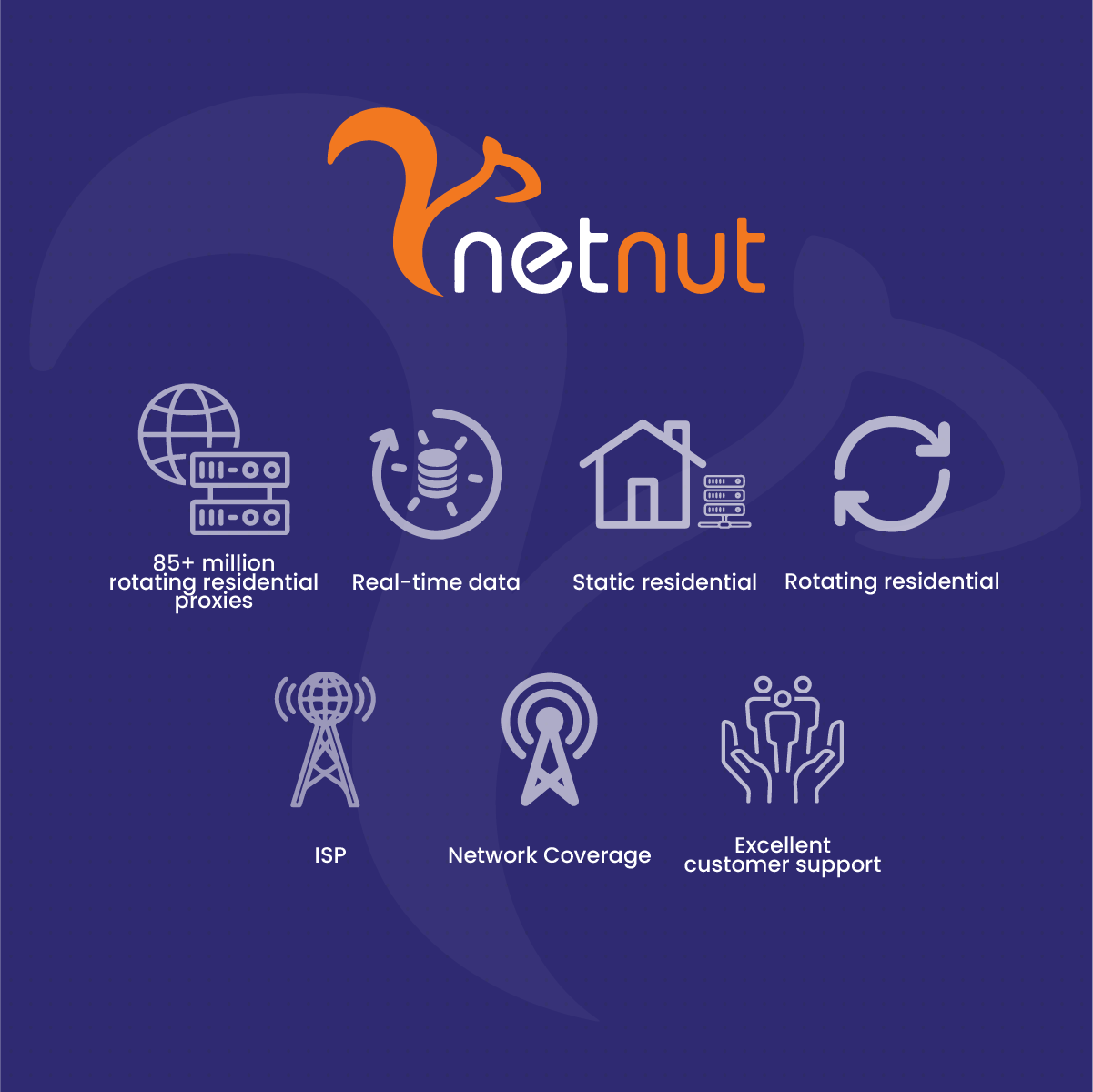Introduction To Image Scraping
Companies of all sizes rely on accurate and up-to-date data to make crucial decisions regarding operations, investment, and marketing strategies. Therefore, they leverage web scraping to collect a large amount of data in a few minutes while eradicating human error to ensure data is complete and relevant. An aspect of web scraping that is becoming increasingly significant is image scraping- the image scraper collects photos instead of texts from the web.
The use of an image scraper has become crucial for collecting data that influences how businesses handle their visual content. Therefore, this guide will examine how to scrape images with Python, applications of image scraping, and why you need NetNut proxies.
What is Image Scraping?
Image scraping is the process of automatically extracting images from websites using a script written with any of the best languages for web scraping. It often involves accessing the website’s HTML source code, identifying the image URLs (which are often found in the <img> tag), and downloading the images to a file on a device. Image scraping is crucial for the collection, analysis, and archiving of images for research, content creation, and other applications.
The method you choose for image scraping depends on your technical knowledge and needs. Individuals with little or no technical knowledge can opt for the no-code image scrapers, which are easy to use. Alternatively, if there is a need for a customized scraper, users could build a scraper bot with any of the programming languages like Python, JavaScript and R- check out a guide on web scraping with R.
There are two primary types of image scraping:
- Automated Image Scraping: Uses bots or web scrapers to extract images in bulk, often with metadata such as alt text, file names, and resolutions.
- API-Based Image Scraping: Some websites provide APIs that allow users to access and download images legally and in a structured format.
Since many websites have anti-scraping measures in place, using residential or mobile proxies helps bypass restrictions and avoid IP bans, ensuring seamless data collection.
How To Scrape Images From A Website With Python
This section will cover how to scrape images from a website with Python and Selenium. It usually involves connecting to the target website, identifying the HTML codes, extracting the image URLs, and downloading the images. In addition, our target website is “https://unsplash.com/s/photos/cats“
Install Python
Since our programming language of choice for this tutorial is Python, the first step is to visit the official website and download Python. Be sure to get the latest versions, as they often come with updates that make your programming more efficient. We also need to prepare the coding environment by using an IDE- (Integrated Development Environment), which is a tool that allows for building, testing, and editing to increase developer productivity. PyCharm and Microsoft Visual Studio are examples of Python IDE.
The next thing to do is initialize the Python project with the following codes:
mkdir image-scraper
cd image-scraper
python -m venv env
The above code creates an image-scraper folder on your device and adds a Python virtual environment to it. Open the project folder in a Python IDE you prefer to create a scraper.py file in the project folder and initialize it:
print(‘Hello, World!’)
At this stage, the file contains a simple script that prints “Hello, World!” but it will soon be home to the image scraping code. We need to verify the script works by clicking on the run button of the IDE or using the code below:
python scraper.py
If “Hello, World!” appears in your terminal, it means the Python project is functional, and you can implement the code to scrape images from a website.
Install Selenium
Selenium is a popularly used scraping framework because it can handle both static and dynamic websites. This browser automation tool can render pages that require JavaScript execution. Check out this guide on how Selenium headless browser works.
Unlike HTML parsers like BeautifulSoup (another popular web scraping framework), Selenium can target more web pages and has more diverse applications. Selenium is an excellent option for image scraping as these websites rely on user interaction to load new images.
However, we need to activate the Python virtual environment before installing Selenium. The process differs based on the user operating system.
For Windows:
env\Scripts\activate
For Linux and macOS:
source env/bin/activate
In the env terminal, install the Selenium WebDriver package with the pip command as shown below:
pip install Selenium
Bear in mind that the installation process may take a while, so you may need to be patient.
Connect to the target site
Import Selenium and the classes required to control a Chrome instance by adding the following lines to scraper.py:
from selenium import webdriver
from Selenium.webdriver.chrome.service import Service as ChromeService
from Selenium.webdriver.chrome.options import Options
The next step is to initialize a headless Chrome WebDriver instance with the following code:
# to run Chrome in headless mode
options = Options()
options.add_argument(“–headless”) # comment while developing
# initialize a Chrome WerbDriver instance
# with the specified options
driver = webdriver.Chrome(
service=ChromeService(),
options=options)
You can remove the ‘–headless option’ if you want Selenium to launch a Chrome window with the graphical user interface. This will allow you to follow what the script does on the page in real time, which is useful for debugging. However, you may need to keep ‘–headless option’ activated to save resources for a large project.
In addition, it is crucial to close the browser window by adding this line at the end of the script:
# close the browser and free up its resources
driver.quit()
Since some pages may display images differently based on the screen size of the user’s device, it is necessary to avoid issues with responsive content by maximizing the Chrome windows via the following code:
driver.maximize_window()
At this stage, we can instruct Chrome to connect to the target page via Selenium by using the get () method:
url = “ https://unsplash.com/s/photos/cats”
driver.get(url)
Launch the image scraping code and the message ‘Chrome is being controlled by automated test software,” which indicates that the window is being operated by Selenium as desired.
Inspect the target website
This step involves inspecting the HTML source code of the target website. Page inspection is necessary to understand the HTML elements, define an effective node selection logic, and how to extract the desired data. We can do this by visiting the target site in the browser, right-clicking the image, and selecting the ‘inspect’ option to open the DevTools.
The image is contained in an <img> HTML element, which means that the CSS selectors to choose the image node is:
[data-test=”photo-grid-masonry-img”]
In addition, the image elements have both the traditional src and the srcsetattribute(this specifies several source images along with hints that help the browser select the right one). Subsequently, the value of srcset has the following format:
<image_source_1_url> <image_source_1_size>, <image_source_1_url> <image_source_2_size>, …
- <image_source_1_url>, <image_source_2_url>, etc., are the URLs to the images with different sizes.
- <image_source_1_size>, <image_source_2_size>, etc., are the sizes of each image source. Allowed values are pixel widths (e.g., 150w) or pixel ratios (e.g., 1.0x)
Retrieve URLs from all the images on the page
The findElements()method is used to select all the HTML image nodes on the page, as shown below:
image_html_nodes = driver.find_elements(By.CSS_SELECTOR, “[data-test=\”photo-grid-masonry-img\”]”)
However, this code requires the Selenium Webdriver to work, which can be imported via:
from Selenium.webdriver.common.by import By
The next step is to initialize a list that will contain the URLs extracted from the image elements with the line of code below:
image_urls = []
At this stage, iterate over the nodes inimage_html_nodes, collect the URL in src or the URL of the largest image from srcset (if available), and add it to image_urls as shown below:
for image_html_node in image_html_nodes:
try:
# use the URL in the “src” as the default behavior
image_url = image_html_node.get_attribute(“src”)
# extract the URL of the largest image from “srcset”,
# if this attribute exists
srcset = image_html_node.get_attribute(“srcset”)
if srcset is not None:
# get the last element from the “srcset” value
srcset_last_element = srcset.split(“, “)[-1]
# get the first element of the value,
# which is the image URL
image_url = srcset_last_element.split(” “)[0]
# add the image URL to the list
image_urls.append(image_url)
except StaleElementReferenceException as e:
continue
Since Unsplash is a dynamic website, some images may no longer be on the page when you execute the code. Therefore, the StaleElementReferenceExceptionfunction needs to be added to mitigate such errors. Add the import like this:
from Selenium.common.exceptions import StaleElementReferenceException
Remember to add this line of code that allows you to print the scrapped image URLs:
print(image_urls)
Run the script, and you will receive an output that contains the URLs of the images for retrieval.
Download the images
For the purpose of this guide, we shall use the urlretrieve() method from theurl.request package of the Python Standard Library. It works by copying a network object indicated by a URL to a local file.
We can import url.request by adding this line of code on top of the scraper.py file:
import urllib.request
In the folder, create an images directory (this is where the script will write the images files) via:
mkdir images
The next step is to iterate over the list with the URLs of the scraped images. Subsequently, we will generate an incremental file name for each image and download the image with urlretrieve() as shown below:
image_name_counter = 1
# download each image and add it
# to the “/images” local folder
for image_url in image_urls:
print(f”downloading image no. {image_name_counter} …”)
file_name = f”./images/{image_name_counter}.jpg”
# download the image
urllib.request.urlretrieve(image_url, file_name)
print(f”images downloaded successfully to \”{file_name}\”\n”)
# increment the image counter
image_name_counter += 1
Put all the codes together and execute it with this command:
python scraper.py
Congratulations, you have successfully scraped images with Python. Although the print()function is not mandatory, it is still useful as it helps understand what the Python script is doing.
Here are some points to consider for improving the Python image scraping script:
- Export image URLs to CSV or store them in a database in case you need them later.
- Avoid downloading images already in the folder so you can effectively manage resources.
- Remember to scrape the metadata information, as they could be useful for getting complete information about downloaded images.
- If you need to scrape more images, you can simulate infinite scrolling interaction to load more images and download them.
Applications of Image Scraping
Image scraping, like web data extraction, has become a crucial tool across multiple industries. Therefore, we will explore how image scraping is useful in certain industries.
Digital marketing and visual content
Digital marketing is a crucial aspect of ecommerce business, and image scraping is used to collect and create visual content for social media and campaigns. Marketers can scrape images from various sources to gather engaging images as part of their content creation strategy. As the demand for visually appealing content increases, image scraping will remain at the forefront of influencing business decisions that will generate successful digital campaigns.
For example, a digital marketer can use image scraping to collect high-quality images for a client’s social media campaigns. They can scrape images based on specific themes and keywords to create visually appealing content across multiple social media platforms. This approach can result in optimized brand visibility, increased engagement, and better campaign performance. Subsequently, image scraping provides valuable insights that allow business to optimize their content strategy to achieve significant improvements in their operations.
Ecommerce
Image scraping is crucial in the ecommerce sector for collecting and analyzing product images from competitors. By scraping images and their meta-data, businesses can gain insights into market trends, product presentation, and pricing. Subsequently, this information helps e-commerce businesses optimize product listings and stay ahead of the highly competitive industry.
For example, an online seller can use image scraping to monitor competitor’s product images and meta-descriptions. Analysis of scraped image allows businesses to identify areas where they could optimize to ensure maximum productivity. As a result, they could experience increase in customer engagement and sales.
Real Estate
Image scraping has changed the real estate industry by allowing the automated collection and analysis of property images across multiple listing websites. In addition, real estate companies can use image scraping to collect data related to interior and exterior designs, as well as floor designs. Analysis of this data is crucial to providing visual information to potential buyers or renters, which improves customer satisfaction.
Selecting the Best Proxy Server for Image Scraping- NetNut
Some of the most common challenges associated with image scraping include IP bans, CAPTCHA, and geo-restrictions. To ensure optimal performance of the image scraper, you need to choose reliable solution-web scraping proxies which cater to all these challenges. However, it is crucial to choose a reliable provider like NetNut. With a large pool of over 85 million rotating residential proxies in 195 countries and 5 million mobile IPS in over 100 countries, image scraping on a global scale is a possibility.
NetNut offers various proxy solutions designed to overcome the challenges of image scraping. The rotating residential proxies are your automated solution that ensures you get access to real-time image from any location in the world. It allows you to bypass geographical restrictions, allowing you to access relevant images without any hindrances.
Scalability is a crucial aspect of the functioning of an image scraper. NetNut proxies are highly scalable and provide high speed to ensure your image retrieval is completed in a few minutes.
NetNut proxies hide your actual IP address to avoid IP blocks as well as maintain security and anonymity. These proxies come with smart A1-CAPTCHA solver which ensures that your image scraper is not hindered by these challenges designed to tell humans apart from bots.
Moreover, if you need customized image scraping solutions, you can use NetNut Mobile Proxy. Be sure to check out our in-house solution- NetNut Scraper API, which allows you to access data from different websites.
Benefits of Image Scraping
Image scraping provides valuable insights and efficiencies for businesses, researchers, and developers. Here are some key advantages:
1. Market Research & Competitive Analysis
Businesses use image scraping to track competitors’ product images, branding strategies, and visual trends. E-commerce platforms, for example, can analyze how competitors showcase their products, pricing models, and user engagement.
2. E-Commerce & Price Monitoring
Online retailers scrape product images from competitor websites to update their listings, monitor pricing changes, and optimize product presentation. This helps in maintaining competitive pricing and improving sales conversions.
3. Content Aggregation & Curation
Media platforms and content creators use image scraping to collect visuals for blogs, news articles, or social media. This enables efficient content curation while ensuring relevant and high-quality imagery.
4. AI & Machine Learning Training
AI developers rely on image scraping to build datasets for machine learning models, including facial recognition, object detection, and image classification. Large datasets improve algorithm accuracy and performance.
5. Brand Protection & Copyright Monitoring
Brands use image scraping to detect unauthorized use of their images, logos, or designs across the internet. This helps businesses enforce copyright policies and protect their intellectual property.
6. Reverse Image Search & Fraud Detection
Image scraping aids in reverse image search applications, helping users verify the authenticity of images, detect counterfeit products, and prevent image-based fraud.
Final Thoughts on Scraping Images From Websites
An image scraper is a tool that automates the collection of images from various websites. This guide has examined how to scrape images using Python to automatically download photos from a web page. With a few lines of code, users can build a scraper bot that retrieves images within a few minutes.
Although Selenium is an excellent web data retrieval framework, it does not offer protection against anti-bot systems. Therefore, it is crucial to integrate a reliable solution like NetNut that offers security and anonymity and allows users to bypass CAPTCHAs and IP bans.
Contact us today to get started.
Frequently Asked Questions About Imaging Scraping Tools
Is it legal to scrape images from a website?
Generally, web scraping is not an illegal activity and this applies to image scraping. However, it is crucial to download only publicly available images, comply with the website’s terms of use and respect robots.txt files. Scraping copyrighted images without permission can be illegal or violate the website terms of use, which can lead to IP bans. Therefore, it is best to only scrape free images or obtain permissions from image owners.
What is an image scraper?
An image scraper is a program or tool that automates the process of scraping images from a website. It could be a simple script that download images from specified web pages or advanced tools that can crawl multiple websites, navigate dynamic content, and download images based on a pre-specified instruction. In addition, an image scraper can be built with programming languages like Python and JavaScript. Alternatively, users can leverage ready-made scraping tools that do not require coding to extract images from the web.
What are some best practices for using an image scraper?
- Check image formats and sizes to ensure the image scraper can handle them to avoid getting inconsistent and incomplete output.
- Limit the frequency of the image scraper request by adding delays in the scraping script. In addition, users can leverage the caching technique to avoid downloading the same image several times.
- Follow ethical and legal regulations provided by the website you want to scrape. If extracting an image violates copyright laws, then the activity may be illegal. In addition, it is best to conform to any rate limits imposed by the website to avoid being blocked.









